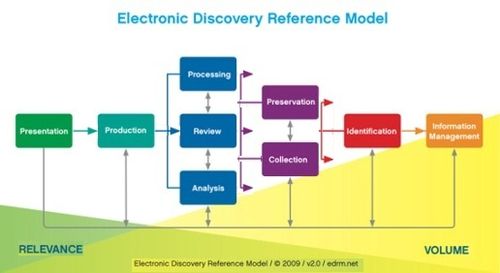Court Denies Plaintiff’s Request for Native Production, Allows PDFs Instead – eDiscovery Case Law

In Westdale Recap Props. v. Np/I&G Wakefield Commons (E.D.N.C. Sept. 26, 2013), North Carolina Magistrate Judge James E. Gates upheld the plaintiff’s motion to compel the defendants to conduct supplemental searches and production, but denied the plaintiff’s motion with regard to requiring the defendant to produce ESI in native format, instead finding that “production in the form of searchable PDF’s is sufficient”.
In this real estate dispute, the plaintiffs asserted claims for fraud against the defendant. While the two sides were able to agree on a discovery plan and a protective order, they were unable to agree on the form of production for electronically stored information (ESI), leading to the plaintiff’s motion. The plaintiffs argued that “the metadata is critical where, as here, a fraud claim is at issue”.
The defendants produced 500 pages of documents after the parties agreed on the protective order, followed by a supplemental production of 120 pages and another 24,000 pages after the plaintiffs filed a motion to compel.
FRCP 34 states that the requesting party “may specify the form or forms in which electronically stored information is to be produced”, which the plaintiff did in 70 of 71 requests for production, requesting that “ESI production be in its native format, rather than searchable PDF’s, so that metadata will not be destroyed.”
However, Judge Gates was not convinced of the need for native production, stating “Plaintiffs’ contention that production of ESI in the form of searchable PDF files would destroy the associated metadata appears unfounded. While the PDF files would not necessarily contain the metadata, Centro represents that the metadata would remain intact and plaintiffs have not shown to the contrary.”
Continuing, Judge Gates stated “The court also finds that plaintiffs have not, at this point, demonstrated an adequate need to have all the ESI produced in native format…Instead, as Centro argues, production in the form of searchable PDF’s is sufficient. If after reviewing Centro’s production plaintiffs determine that they still seek production of particular ESI in native format, they may file an appropriate motion.”
Judge Gates did conclude, however, that the defendants were required to perform supplemental searches and production, ordering the defendants to produce all responsive documents based on additional search terms provided by the plaintiffs.
So, what do you think? Should the plaintiffs have been able to receive the production in their requested native format? Please share any comments you might have or if you’d like to know more about a particular topic.
Disclaimer: The views represented herein are exclusively the views of the author, and do not necessarily represent the views held by CloudNine Discovery. eDiscoveryDaily is made available by CloudNine Discovery solely for educational purposes to provide general information about general eDiscovery principles and not to provide specific legal advice applicable to any particular circumstance. eDiscoveryDaily should not be used as a substitute for competent legal advice from a lawyer you have retained and who has agreed to represent you.





